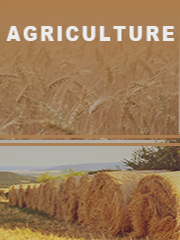TOP CATEGORY: Chemicals & Materials | Life Sciences | Banking & Finance | ICT Media

Download Report PDF Instantly
Report overview
Soil amendment means any chemical, biological, or physical material (such as mineral fertilizers, stabilized compost, manure, non-fecal animal byproducts, peat moss, perlite, pre-consumer vegetative waste, sewage sludge biosolids, table waste, agricultural tea and yard trimmings) intentionally added to the soil to improve the chemical or physical condition of soil in relation to plant growth or to improve the capacity of the soil to hold water.
This report aims to provide a comprehensive presentation of the global market for Soil Amendment, with both quantitative and qualitative analysis, to help readers develop business/growth strategies, assess the market competitive situation, analyze their position in the current marketplace, and make informed business decisions regarding Soil Amendment. This report contains market size and forecasts of Soil Amendment in global, including the following market information:
The global Soil Amendment market was valued at US$ 7784 million in 2022 and is projected to reach US$ 13880 million by 2029, at a CAGR of 8.6% during the forecast period. The influence of COVID-19 and the Russia-Ukraine War were considered while estimating market sizes.
Soil Amendment major producers in the industry include BASF, Solvay etc. By region, the North America region had the highest share of income, accounting for 36 percent, followed by Europe with 20 percent.
We surveyed the Soil Amendment manufacturers, suppliers, distributors and industry experts on this industry, involving the sales, revenue, demand, price change, product type, recent development and plan, industry trends, drivers, challenges, obstacles, and potential risks.
Total Market by Segment:
Global Soil Amendment Market, by Type, 2018-2023, 2024-2029 ($ Millions) & (K MT)
Global Soil Amendment Market Segment Percentages, by Type, 2022 (%)
Global Soil Amendment Market, by Application, 2018-2023, 2024-2029 ($ Millions) & (K MT)
Global Soil Amendment Market Segment Percentages, by Application, 2022 (%)
Global Soil Amendment Market, By Region and Country, 2018-2023, 2024-2029 ($ Millions) & (K MT)
Global Soil Amendment Market Segment Percentages, By Region and Country, 2022 (%)
Competitor Analysis
The report also provides analysis of leading market participants including:
Further, the report presents profiles of competitors in the market, key players include:
Outline of Major Chapters:
Chapter 1: Introduces the definition of Soil Amendment, market overview.
Chapter 2: Global Soil Amendment market size in revenue and volume.
Chapter 3: Detailed analysis of Soil Amendment manufacturers competitive landscape, price, sales and revenue market share, latest development plan, merger, and acquisition information, etc.
Chapter 4: Provides the analysis of various market segments by type, covering the market size and development potential of each market segment, to help readers find the blue ocean market in different market segments.
Chapter 5: Provides the analysis of various market segments by application, covering the market size and development potential of each market segment, to help readers find the blue ocean market in different downstream markets.
Chapter 6: Sales of Soil Amendment in regional level and country level. It provides a quantitative analysis of the market size and development potential of each region and its main countries and introduces the market development, future development prospects, market space of each country in the world.
Chapter 7: Provides profiles of key players, introducing the basic situation of the main companies in the market in detail, including product sales, revenue, price, gross margin, product introduction, recent development, etc.
Chapter 8: Global Soil Amendment capacity by region & country.
Chapter 9: Introduces the market dynamics, latest developments of the market, the driving factors and restrictive factors of the market, the challenges and risks faced by manufacturers in the industry, and the analysis of relevant policies in the industry.
Chapter 10: Analysis of industrial chain, including the upstream and downstream of the industry.
Chapter 11: The main points and conclusions of the report.